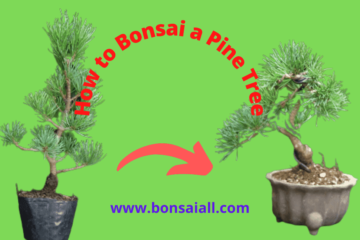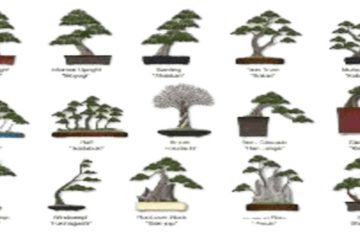The Mimosa Tree, also known as the Silk tree, has a number of interesting facts associated with it that make it an ideal subject for further study. It’s great to know how to grow them and what they’re used for, but you should also know how to take care of them in case you ever need to treat them, or if you want to learn more about their anatomy and physiology. Here are some fascinating Mimosa tree facts about this plant you may not have known before.
What is Mimosa Tree?
Content Overview
The mimosa tree is commonly referred to as Mimosa or Mimosa tree. Its botanical name is Albizia julibrissin, but it’s also called silk tree and feathery mimosa. It belongs to a group of trees known as leguminous plants—it is part of the Fabaceae family and in the genus Albizia.
There are about 40 species of Albizia. The mimosa tree, also known as the silk tree, belongs to a group of trees called leguminous plants. The other members of the Fabaceae family include such plants as beans and peas, clovers, vetches, and soybeans. Among all legumes, mimosas are considered one of the most significant.
Mimosa Tree Step By Step Guide To Identifying A Mimosa Tree
Though mimosa trees can be identified by sight, it is better to use cuttings or seeds as evidence when dealing with mimosa tree invasions. Because mimosa trees don’t have distinctive leaf markings, it’s easier to identify them by their flowers. Once you find a plant growing in an area where you didn’t intentionally plant one, pull up its root and look for dig marks around the base of the trunk.
Identifying mimosa trees is easier if you start with cuttings or seeds, but it can be done visually. The easiest way to do it is by looking at their flowers, which grow in clusters and are typically yellow or pink. Once you see yellow or pink flowers growing where you didn’t plant them, pull up some of that plant’s roots and look for damage around its trunk.
The bark of mimosa trees is red or grey and smooth, with few branches and no thorns. Because mimosa trees grow quickly, they aren’t easily identifiable until they become more mature. To identify one once it reaches adulthood, look for its flowers. The tree blooms in May through July when white lily-like blossoms with yellow centers appear at branch tips. These flowers grow in clusters as tall as 20 inches high and 12 inches wide.
What are the Mimosa tree Facts?
The mimosa tree, or silver wattle as it’s sometimes called, is a deciduous tree that thrives in hot and dry environments. It features bright yellow flowers that develop into fuzzy pods filled with dark brown seeds. While these trees are attractive and native to Australia, they’re considered an invasive species in many parts of North America and are banned in several US states. If you live in an area where these trees grow naturally, here are some interesting facts about them
Mimosa Trees Use Up Nitrogen: This can be a problem for nearby gardens if you have one because they also release ammonia when they decompose. This isn’t toxic to humans but it can cause problems for your plants if your soil is already low on nitrogen.
The mimosa tree is also known as chataigne, yellow mimosa, acacia, silk tree, and other names in different parts of Europe. In Australia, it’s referred to as wattle after its original botanical name Acacia dealbata.
It can grow up to 20 meters tall but is usually shorter than that. Its bark is light gray and features small longitudinal grooves along its surface.
Mimosa trees are deciduous and shed their leaves during the winter months in most areas. Their flowers develop into fluffy pods filled with brown seeds that resemble peanuts when they ripen.
Although mimosa trees are beautiful to look at, you should be careful if you live in an area where they grow naturally. If you find out that you have these invasive plants growing on your property, there are several things you can do to remove them and protect nearby areas from their negative effects.
These include removing all leaves, stems, and other plant parts when they start falling off during the winter months.
Learn more about mimosa trees, why they’re considered invasive in some areas and how you can keep them from damaging your garden and nearby native plants. If you live in an area where mimosa trees grow naturally, take steps to protect local environments by removing these pests before they become even bigger problems.
What are Mimosa tree problems?
Beyond its invasive nature, mimosa tree problems can also include a number of different issues. For example, these plants are susceptible to several different types of pest infestations, including larvae of insects and fungi. In addition, due to its habit of dropping branches if even slightly disturbed, mimosa trees should not be planted in close proximity to structures that might be damaged by falling branches.
Beyond these mimosa tree problems, it is also common for animals and insects to be attracted by its attractive scent. This can cause significant damage in areas where these pests are present. In addition, mimosa trees typically need minimal maintenance and care during most of their lifespan. However, they can become problematic after they reach maturity and begin dropping limbs as mentioned above.
These factors can make it difficult for homeowners who have mimosa trees on their property. Fortunately, there are several simple measures that can be taken to reduce both mimosa tree problems and ensure its future growth remains healthy.
How to get rid of Mimosa Weeds for goods?
This pesky weed can sprout anywhere—it’s a hardy plant that takes almost nothing to grow. The thick stems and bulbous root system allow mimosa weeds to spread quickly, making them one of your worst enemies if you have an infestation. Luckily, getting rid of these weeds is fairly simple if you are willing to put in some time and effort. We’ve done all the research for you with our step-by-step guide below.
To get rid of these weeds, you’ll need a few supplies and plenty of elbow grease. Grab your gloves and we’ll walk you through how to do it step by step. First, identify which weeds are mimosas—they’re easy to spot because they have a distinctive smell. Once you know what kind of weed it is, you can begin pulling up the root system from where they sprout.
Now that you know how to identify and remove mimosa weeds, you can use these methods over and over again without ever dealing with them again. The key is consistency—you’ll need to keep up with your routine if you want a long-term solution that eliminates every trace of these noxious weeds.
These weeds are persistent, but you can get rid of them with time and patience. If you follow our steps and keep your schedule consistent, your lawn will be free from mimosas in no time! Now that you know how to identify and remove mimosa weeds, your yard will always be a beautiful green. If want to learn more about Mimosa Weeds check the below post.
Read More: How to Get Rid of Mimosa Weeds for Good
Mimosa tree bark
Although tree removal is considered a permanent solution, mimosa bark provides a good long-term way to keep them at bay. To use it, simply fill a bucket with mimosa tree bark (you can also find it in bags), then sprinkle half on the area you wish to treat and cover with water; let sit overnight. In general, it will take about four applications (once every three months) over two years before your mimosa weeds are eradicated.
Another trick is a natural herbicide that you can use on your property: mimosa tree bark. Mimosa tree bark prevents mimosas from taking root in your soil, and it also keeps existing ones from spreading. Plus, it’s much safer than other herbicides you could use.
In order to use mimosa tree bark as an herbicide, you will need two things: bark from a healthy mimosa tree and hot water.
After gathering mimosa tree bark, boil it in water (you can also microwave it) until you have about a gallon. Pour half on one side of your yard and cover with water. The other half should be set aside and used later. This will create a barrier against future mimosas so they don’t take root or spread further into your yard.
What is the Mimosa Tree used for?
While they’re often mistaken for weeds, mimosa trees are commonly used in landscaping due to their year-round attractiveness. You’ll often find them planted along walkways, near parking lots, and alongside property lines. The tree is easy to spot due to its unique yellow flowers and fern-like leaves that can grow up to 15 feet wide.
The mimosa tree is more than just an attractive addition to any garden; it also offers several health benefits. The tea from mimosa leaves has been shown to have properties that help with indigestion, allergies, skin irritations, and hypertension. And while they don’t offer much in terms of shelter or shade, their flowers produce seeds that can be used as alternative food sources for birds and insects.
If you want to use your mimosa tree for its health benefits, you’ll need to harvest about 15-20 leaves from an immature tree and let them steep in boiling water for 10 minutes. After that, you can enjoy your tea hot or cold—or even use it as a component in other herbal remedies.
Mimosa tree leaves
A tree’s leaves are compound and alternate, with 11-21 leaflets per leaf. There is one terminal leaflet, while 10-11 are smaller and are alternately arranged on either side of it. The flowers of mimosa tree leaves are inconspicuous and small in diameter (1/2-3/4 inch). Like other legumes, mimosa trees possess nitrogen-fixing bacteria in their root nodules that help break down organic compounds for use by all parts of their system.
And that’s not all, mimosa tree leaves are also insecticidal. Insects such as fire ants and cockroaches cannot tolerate their toxic nature. They contain a yellow substance known as saponin which acts like soap when they come in contact with an insect’s exoskeleton.
The leaves of the mimosa tree can be used for medicinal purposes. The natural chemicals in them are used as antispasmodic, expectorant, and sedative. They can be used to treat coughs as well as difficulty breathing.
FAQ
When do mimosa trees leaf out?
Mimosa trees leaf out in April or May. This time depends on your region, as spring weather varies by region. Check with a nearby nursery for mimosa tree leafing dates. There’s no surefire way to predict exactly when a mimosa tree will leaf out, so you may have to check daily if you’re waiting anxiously for signs of leaves.
When do mimosa trees bloom?
The mimosa tree is known as an invasive species in most parts of North America and Europe but can be a beautiful addition to landscapes in places like Brazil and Australia. You’ll have these weedy trees growing up through your lawn unless you take action, so when do mimosa trees bloom?
In their native areas, mimosa trees typically bloom from January through March. As with most plants in temperate climates, their blooming time is tied directly to environmental conditions. The flower buds on a mimosa tree are susceptible to frost damage until they open, and when you see those pretty pink flowers it’s a sign that things have warmed up enough for them to emerge unscathed. When do mimosa trees bloom?
How long do mimosa trees live?
It’s hard to say how long a mimosa tree will live, but they have been known to live up to 300 years. That’s because they are incredibly hardy and can adapt to almost any growing environment.
Generally, a mimosa tree’s average life expectancy is about 15 or 20 years, but some have been known to live up to 300 years. This means that if you’re not happy with your mimosa tree and want it removed, you may have a little time before it needs removal. But don’t let its long lifespan fool you—mimosas are fast-growing trees that can become quite large in a short amount of time.
How fast do mimosa trees grow?

In terms of growth, mimosa trees are highly competitive. Their growth rate can exceed three feet annually, which makes them among the fastest-growing plants. But these should be planted only in areas with high levels of sunlight and little competition from other plants. Because they can grow so quickly, it’s critical to plant them properly when starting a mimosa garden or plantation.
There are many types of trees that can be used for fast-growing ornamental purposes. However, mimosa trees offer something extra – those magnificent fluffy flowers! While their growth rate is rather impressive, it’s their springtime display that many people find so alluring.
These trees will get up to 25 feet in height and can spread out as wide as 45 feet or more.
How to keep a mimosa tree small?
Keeping a mimosa tree small is an important consideration to make. These trees can get very large and they tend to grow into areas where they are not welcome. Many people plant mimosas as ornamental additions to their yard, but then end up pulling them out due to the size. To limit the size of your tree, prune it once per year during the early spring or late winter before new growth appears. You will also need to prune it to further limit the tree’s size.
Conclusion
The mimosa tree has its problems and its weeds, but overall it is a beautiful and amazing tree. In fact, I think mimosa trees are one of my favorites! They just have so much character! I hope you learned some useful information today about Mimosa Tree Facts, Problems, Uses, and Leaves. But don’t take my word for it; check out other reputable sources online and even at your local library.
Read The Related Blog Posts:
- How to Mimosa Tree Grow and Care Beginners Ultimate Solution
- How To Take Care of a bonsai tree
- The Ultimate Guide To Best Bonsai Tree Fertilizers



